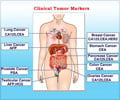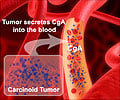A new report from the Centers for Disease Control and Prevention (CDC) says that improper handling of intravenous saline caused outbreak.

"This outbreak illustrates the need for outpatient clinics to follow proper infection control guidelines and medication preparation practices to minimize the risk of infection for patients with weakened immune systems," said Isaac See, MD, lead author of the study. "A combination of careful descriptive epidemiology with attention to outlier cases, direct observations, and analytic studies were needed to support this investigation, which pointed to deficiencies in medication preparation practices as the cause of these unusual infections."
From September 2011-May 2012, 15 immunocompromised patients developed Tsukamurella bloodstream infections. All patients had received a diagnosis of malignancy, and had an indwelling central line, although central line types varied. A case-control study determined that the only risk factor for developing Tsukamurella infection was the receipt of saline flush, prepared by the clinic staff from large preservative-free bags of saline, from the clinic during September-October 2011.
Investigations by the West Virginia Bureau of Public Health (WVBPH) and the CDC found several lapses in infection control procedures relating to the care of long-term intravenous catheters and preparation of chemotherapy for patients at the clinic. These investigations also suggested that saline flush syringes were the likely source of infection.
Following the recommendations of WVBPH and CDC, the clinic instituted several changes to its infection prevention and control practices; including using pre-packaged manufactured saline flushes. After the clinic changed this practice, Tsukamurella bloodstream infections stopped occurring, further supporting the saline flush as the source of infection.
To help outpatient oncology facilities establish appropriate infection control strategies, the CDC developed a basic infection control plan tailored to these settings outlining key policies and procedures needed to meet minimal requirements for patient safety. These include the proper use and handling of injectable medications and correct procedures for assessing central lines. Outpatient oncology facilities without an existing plan are encouraged to use this document as a starting point.
Advertisement
Source-Eurekalert















